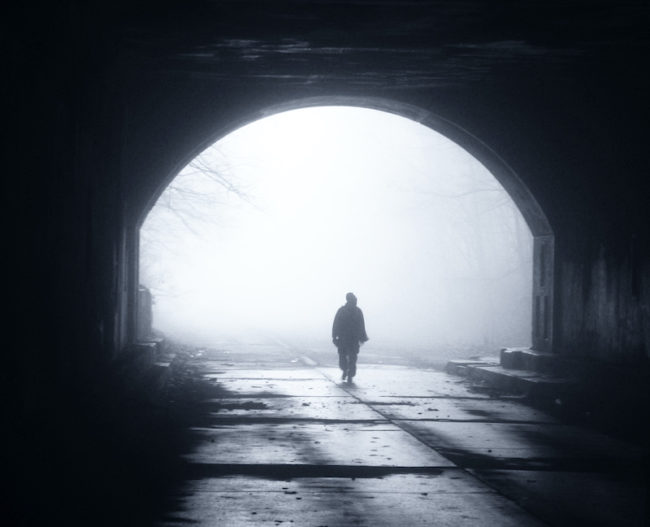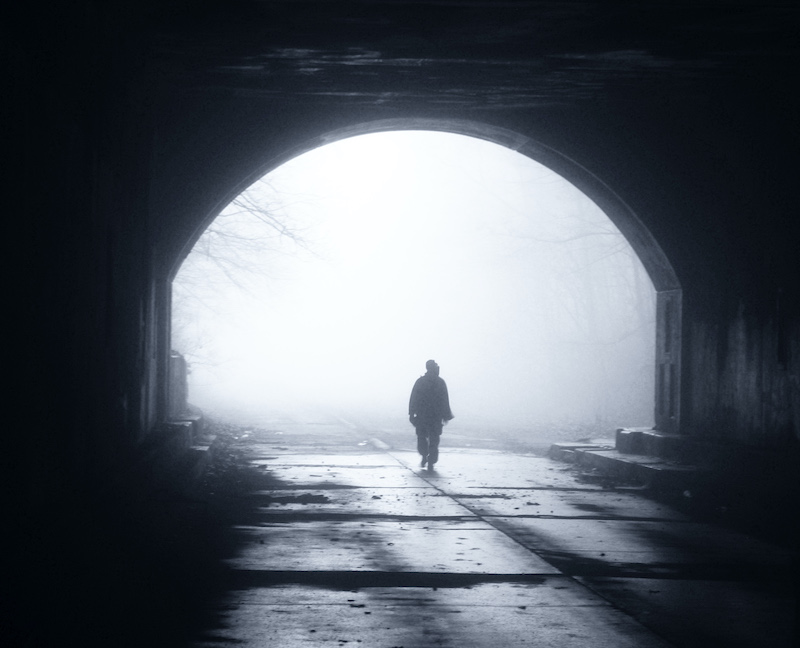
Once, when I was a teenager, I attended a Pentecostal group. I recall one meeting where at one point events took a rather unexpected turn. Pastor Nick had been running a rather normal meeting, when suddenly an elderly visitor had a bit of a turn. He went very pale, passed out, and slumped in his seat. Everything stopped. The Pastor went over, laid hands on him, prayed for him, and he soon came around. Those sitting around gently led him outside so that he could get a breath of fresh air while Pastor Nick resumed the meeting.
The subsequent narrative around this was a claim that he had not simply passed out, but had died there in the meeting. The Paster had supposedly brought him back to life – it’s a miracle.
How was this confirmed?
A lady called Liz who was a nurse, and had been sitting at the other side of the room, had verified it by simply expressing the opinion that this is what had happened.
By now your skeptical alarm is most probably raising a little red flag and clanging away rather loudly. You are right of course. It was a hot summer, there was no air conditioning in the room, the chap was elderly and was not in the best of health. What is rather obvious is that he had simply fainted, slumped, been revived, got a bit of fresh air, and life went on.
What is fascinating here is that this disconnect between the rather blatantly obvious and the claimed explanation is a rather common pattern. This should not be a surprise. What we believe often greatly influences how we interpret events around us.
I have another far more recent example of this via Hemant Mehta.
Side note: Hemant is the non-religious author of a fun little book titled “I Sold My Soul on eBay“. He rather famously put up an entry on eBay offering to attend worship services picked by the highest bidder. The guy who won asked him to attend seven different churches and then write about the experience. Within his book he tells the story of the eBay sale, and describes his visits.
So anyway, on to his example.
Sept 25, 2021: Janet Porter claims on TV that her prayers resurrected a dead child
She made this claim on TV so it just must have been true. This is because everybody on TV only ever tells the truth … right?
OK, you can stop laughing now.
The reveal is this, she made her resurrection claim on that well-known hub of “truth”, the Jim Bakker show. Yes “the” Jim Bakker, the TV evangelist who spent many years in jail for wire fraud and mail fraud. If you really do want to establish your credibility for anything, then appearing on a show run by a convicted fraudster, who was recently fined $157,000 for selling a fake COVID cure, is really not your best move.
Here is the resurrection claim clip via Hemant from just a few days ago …
The clip is short, just one minute. The dialog is as follows …
I’ll just tell you one story — wasn’t planning on telling you this.
We were filming in Fort Lauderdale over Labor Day weekend, and there was a little boy — a nephew of one of our cast members — and they said he drowned. And so we stopped filming. We’re, like, four hours behind our filming. We stopped. And we just prayed — the entire casting, the entire crew –we just stopped and we prayed. And we asked God to give us that little boy back. I mean, it’s a ridiculous prayer it’s absolutely you know, the kid’s dead.
They tried to resuscitate him. He’s dead. Three-year-old fell in the pool. This little boy’s Tristan. And we were praying. We started shifting. We started talking about other times we’ve seen God do the miraculous.
…and in about, maybe, ten minutes later, we were 40 minutes praying for this little boy, who was gone. He was dead. And we started thanking God for what He did. And one of the girls got a text. She came running down the hall. And
we heard these words: He’s alive! This little boy, who was dead, is alive.We serve a God of resurrection power. He can stop tsunamis. He can raise the dead. He can end abortion. That’s who we serve.
Just to make this clear. Neither she, nor those around her, witnessed what had actually happened. They simply heard that the boy had drowned, prayed, then 40 minutes later they hear that he is fine.
You now have options …
- Option 1 – The boy really had died, was brain dead, and was then resurrected. That would have been rather a shock to those with the boy because this lady is claiming it was the prayer of her TV cast that brought him back.
- Option 2 – The boy fell into the pool, got a lung full of water, but with a quick bit of mouth-to-mouth and chest compressions, he was saved. The actual thanks should go to the lifeguard, not a supernatural entity.
You can of course see what the real answer actually is. You really don’t need any supernatural explanation at all.
Things we can be sure about
Janet most probably does sincerely believe all this. She already believes in the supernatural and miracles, so for her this is not a huge leap to make, but instead is just another event that aligns with how she interprets things.
Option 2 here is the far simpler most probable explanation. While it might indeed conflict with her description, you most probably don’t actually struggle with it because it makes far more sense.
A rather useful tool that you can deploy when faced with multiple options is Ockham’s razor. This is a problem solving principle that says “entities should not be multiplied beyond necessity”.
Huh!
To turn that into plain english, “the simplest explanation is usually the best one.”
In this case, Option 1 requires the existence of a supernatural entity that uses magic to bring dead people back to life upon request. Option 2 needs no supernaturalism or magic at all, and so it is the most probable solution.
Why is it Like this, why do people make such claims?
You don’t actually see or hear or smell or feel, instead your brain is sent signals that it then uses to construct a model, a representation of all that input. Even then, you are still interpreting it all as best you can by using what you already know.
Your upbringing and cultural inheritance seeds all of this. If an individual from a radically different culture with very different religious beliefs is exposed to the same event, then they will inevitably interpret it and understand it quite differently.
The Rorschach test is a psychological test in which people are shown a random inkblot and asked to articulate their perceptions of it. To be wholly honest, some do dispute the value of this specific test, but that’s not my point here. Life itself, everything that happens to us is perhaps very much akin to a Rorschach test. We interpret it all and give birth to a wholly subjective meaning from quite random events. We will even attribute agency to some things where in reality there is none.
To be wholly clear, this is not “us” vs “them”, but rather it is all part of the human experience. It is just “us”. We are all prone to a bit of creative interpretation as we grapple with life itself and attempt to understand what is going on.
The knowledge that we are like this can perhaps also empower us to pause and challenge our own core beliefs and assumptions. If indeed we question what we believe to be true and it falls apart because it does not withstand analysis, then we should not fear that. It opens the door to a newer better more robust understanding.
Bottom Line: Strive to believe as many true things as possible, and to reject as many false things as possible. Hold all conclusions tentatively and be open to the possibility of better explanations that are backed by verifiable evidence.
